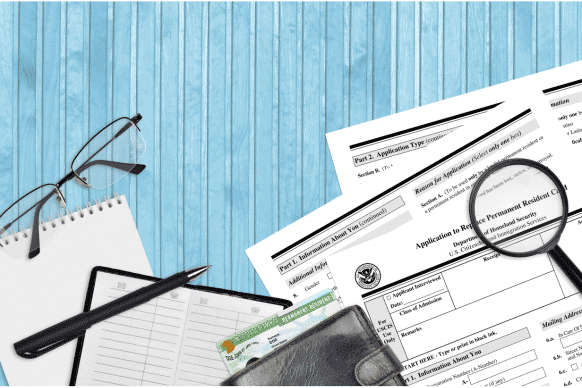
Form I-751, Petition to Remove Conditions on Residence, is a critical step for conditional residents who wish to transition to lawful permanent residency status in the United States. This form serves a specific purpose, carries eligibility requirements, and must be filed within a particular timeframe.
The Purpose of Form I-751 is to allow conditional residents who obtained their status through marriage to remove the conditions on their residence. Filing this form is necessary for these residents to become lawful permanent residents with a 10-year Green Card. The United States Citizenship and Immigration Services (USCIS) uses the information provided in Form I-751 to confirm that the marriage was entered in good faith and not for the purpose of evading immigration laws.
To be Eligible to File Form I-751, petitioners must meet the following criteria:
Timelines for Filing Form I-751 are precise:
When preparing your I-751 application, accuracy and thoroughness are critical. The applicant should ensure that all required documentation is gathered beforehand, the form is completed accurately, and that sufficient evidence is provided to establish the bona fide nature of the marriage.
A complete application must include:
The applicant must provide the following details:
The form must be signed and dated.
Applicants should submit documents that cover:
All documents must be organized and clearly labeled.
After filing Form I-751, conditional residents may travel abroad; however, one must understand the limitations and requirements to maintain their residency status during travel.
Conditional residents should minimize travel after filing Form I-751. They remain authorized to travel abroad, but should carry evidence of their filed petition and the extension of their Green Card validity, as noted by USCIS in January 2023, extending Green Card validity for 48 months post-expiration for those who properly file Form I-751.
If the conditional resident’s Green Card has expired and they have not received the extension notice, they may need an Advance Parole document to re-enter the United States without jeopardizing their status. To obtain this document, one must file Form I-131, Application for Travel Document, with USCIS before leaving the country.
Traveling after filing Form I-751 does not change one’s status as a conditional resident. They are expected to maintain their permanent resident status during their travels by following the proper protocols and being prepared for re-entry into the U.S. with the correct documentation. It’s crucial to keep the physical proof of the status and the pending I-751 to prevent issues upon return.
When petitioning to remove conditions on residence with Form I-751, applicants may encounter delays or be required to address specific issues. Understanding how to navigate these situations is essential to maintain legal status and travel privileges.
Processing times for Form I-751 can vary, typically taking several weeks to receive the I-797C, Notice of Action. This document serves as a receipt and provides an 18-month extension to one’s conditional residence while the application is pending. If the applicant experiences processing delays beyond the normal timeframe, they should:
It is vital for applicants to promptly report any changes in address to USCIS to prevent miscommunication. An address change should be reported within 10 days of moving by:
An RFE indicates USCIS requires additional documentation to make a decision on the application. Applicants should:
Applicants should address any RFEs promptly and meticulously, ensuring that they meet USCIS requirements to avoid complications with their status.
When a conditional permanent resident files Form I-751, it is essential to maintain valid, current documentation throughout the processing period. Renewal of the Green Card and replacement of any lost or stolen documents are critical steps during this time.
After filing Form I-751, Petition to Remove Conditions on Residence, the United States Citizenship and Immigration Services (USCIS) extends the validity of the applicant’s Permanent Resident Card (Green Card) for 24 months beyond the card’s expiration date. Applicants receive a Notice of Action stating this extension. It is important to carry this notice along with the expired Green Card as evidence of continued legal status in the United States.
If a conditional permanent resident’s Green Card or Notice of Action is lost or stolen, they must promptly file Form I-90, Application to Replace Permanent Resident Card, to replace the Green Card. Additionally, if the Notice of Action is misplaced, contacting USCIS to obtain a replacement is necessary to prove the extension of the Green Card’s validity. It’s imperative to keep copies of all filed documents and to report any loss or theft immediately to prevent complications in legal status or travel.
After the United States Citizenship and Immigration Services (USCIS) makes a decision on Form I-751, petitioners face two primary outcomes. These scenarios will dictate their next steps in the residency process.
Once USCIS approves Form I-751, the petitioner’s status as a conditional resident is changed to a permanent resident. The Green Card validity is extended, affirming their status to live and work in the United States indefinitely, subject to the laws governing permanent residency. In January 2023, USCIS announced that Green Cards for petitioners who have properly filed Form I-751 will have their validity extended for 48 months beyond the card’s original expiration date.
If USCIS denies Form I-751, the petitioner does not immediately lose their lawful status, but it does trigger the possibility of deportation proceedings. Petitioners have the option to seek an appeal or file a motion to reopen or reconsider the decision. These legal steps allow them to present additional evidence or challenge the basis of the denial. The time frame and process for appeal or filing motions are critical and must be adhered to strictly to maintain the possibility of retaining residency rights.
Boulevard Plaza Tower 1, Level 3
Sheikh Mohammed Bin Rashid Blvd.
Downtown Dubai, UAE
Bhutani Alphathum, Tower – C
Unit – 1817-1818, Blossom County, Sector 90, Noida, Uttar Pradesh 201305
2125 Biscayne Blvd., Office 221
Miami, FL 33137
+1(954) 305-4269